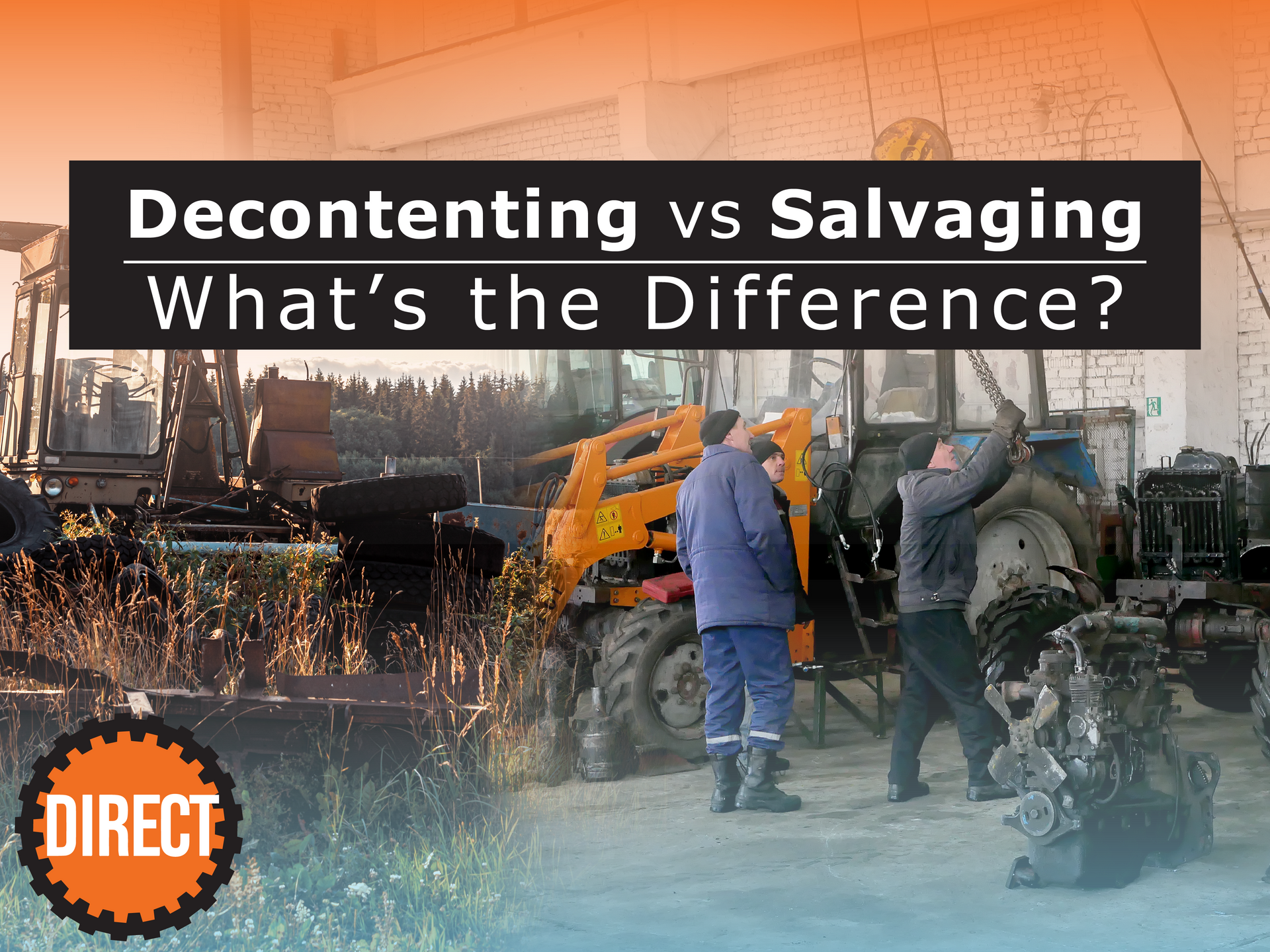
Decontenting vs Salvaging: What’s the Difference?
In the agricultural sector, the efficient and responsible management of end-of-life tractors is crucial. Traditional approaches often involve simple demolition and disposal, leading to significant waste and environmental harm. However, a more sustainable and beneficial approach is emerging: tractor salvage through a process known as decontenting. Decontenting involves a meticulous and systematic disassembly of a tractor to recover valuable components for reuse, repair, or recycling. This approach not only minimizes environmental impact but also offers significant economic and practical advantages for farmers, equipment owners, and the agricultural industry as a whole. By prioritizing part quality, functionality, and environmental sustainability, decontenting provides a superior alternative to traditional tractor salvage methods.
Decontenting:
- Focus: Carefully disassembling a tractor or other product to recover and reuse as many parts as possible.
- Method: Involves a systematic and methodical disassembly process, often by skilled technicians, prioritizing the preservation of part quality and functionality. This may involve cleaning, inspecting, and potentially performing minor repairs on recovered parts.
- Environmental Impact: Minimizes landfill waste by diverting valuable components from disposal. Conserves resources by reducing the need for new material extraction, and minimizes the associated environmental impacts. Reduces the pollution associated with extracting and processing raw materials for new parts.
Salvaging:
- Focus: Recovering usable materials from a discarded or demolished tractors, backhoes, automobiles, and more on and off-road vehicles.
- Method: Can involve sifting through tractor debris, often in uncontrolled environments, to find potentially reusable parts.
- Scope: Often a less systematic process, focusing on readily identifiable and easily accessible parts, potentially overlooking hidden or less obvious components.
Here's a simple analogy:
- Decontenting is like carefully dismantling a valuable antique clock to preserve its intricate gears and mechanisms for future repair or restoration.
- Salvaging is like sifting through the rubble of a demolished clock tower to find any usable pieces of metal.
Key Differences:
| Feature | Decontenting | Salvaging |
|---|---|---|
| Primary Goal | Maximize part reuse and functionality | Recover usable materials |
| Approach | Systematic disassembly, prioritizing part quality | Unstructured recovery from debris |
| Scope | Comprehensive disassembly of the entire tractor | Focus on readily identifiable parts |
| Environmental Impact | Significantly more environmentally friendly | Higher environmental impact due to waste and potential for part damage |
Why Decontenting Tractor Parts is Superior:
-
Environmental Superiority:
- Reduced Landfill Waste: Decontenting minimizes the amount of tractor components, often made from durable but non-biodegradable materials like steel and cast iron, ending up in landfills.
- Conservation of Resources: Reusing existing tractor parts conserves valuable natural resources, reduces the need for new material extraction, and minimizes the associated environmental impacts.
- Reduced Pollution: Manufacturing new tractor parts involves significant energy consumption and can release harmful emissions into the atmosphere. Decontenting helps mitigate these environmental concerns.
-
Economic Advantages:
- Cost Savings: Reusing high-quality, decontented parts is significantly more cost-effective than purchasing expensive new components, leading to substantial savings for farmers and equipment owners.
- Extended Equipment Lifespan: Reusing quality used parts can extend the lifespan of older tractors, reducing the need for premature replacement and keeping valuable equipment in service longer.
- Improved Equipment Availability: Decontenting increases the availability of hard-to-find or obsolete tractor parts, ensuring farmers can maintain equipment uptime and minimize costly downtime.
-
Quality and Reliability:
- Enhanced Part Quality: Decontenting often involves careful inspection, cleaning, and potential minor repairs, ensuring the recovered parts meet high-quality standards and function reliably.
- Controlled Storage: Decontenting typically involves storing recovered parts in controlled environments, such as climate-controlled warehouses (like Tractor Part Direct's facility in Springfield, MO), protecting them from the elements and ensuring optimal condition for future use.
In Summary:
Decontenting tractor parts offers a superior approach to managing end-of-life equipment compared to traditional tractor salvage methods. By prioritizing part quality, functionality, and environmental sustainability, decontenting provides significant economic, environmental, and operational benefits for the agricultural industry.